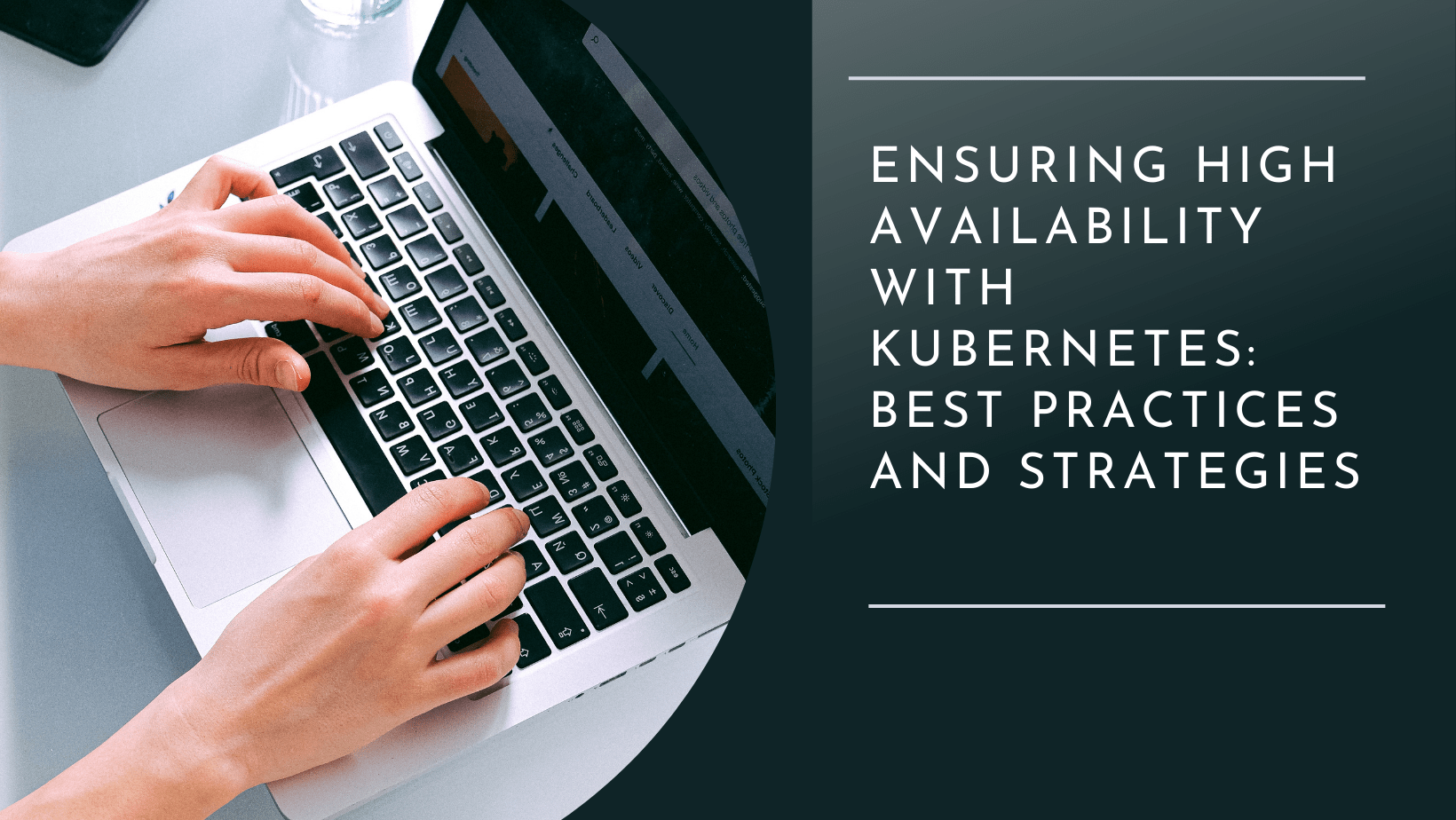Ensuring High Availability with Kubernetes: Best Practices and Strategies
Want to ensure high availability with Kubernetes? Explore best practices and strategies for replicating instances, load balancing, monitoring, rolling updates, and disaster recovery. Keep your applications resilient and deliver a seamless user experience.

Explore best practices and strategies for achieving high availability with Kubernetes.
In today's fast-paced digital landscape, downtime can be detrimental to any business. Whether it's an e-commerce platform, a banking application, or a social media network, ensuring high availability is crucial for delivering a seamless user experience and maintaining customer satisfaction. Kubernetes, with its advanced orchestration capabilities, has emerged as a go-to solution for achieving high availability in modern cloud-native architectures. In this article, we will explore the best practices and strategies for ensuring high availability with Kubernetes.
Understanding High Availability
High availability refers to the ability of a system to remain operational and accessible even in the face of failures. It involves designing and implementing resilient architectures that minimize downtime and provide uninterrupted service to end users. Kubernetes, an open-source container orchestration platform, offers features and tools that enable developers to build highly available applications.
Best Practices for High Availability with Kubernetes
1. Replicating Application Instances
The first step towards achieving high availability is to ensure that your application is replicated across multiple instances. Kubernetes achieves this through the concept of Pods, which are the smallest deployable units in a cluster. By running multiple replicas of your application within separate Pods, Kubernetes ensures that if one instance fails, the workload can seamlessly switch to a healthy replica, minimizing downtime.
2. Leveraging Load Balancing
Load balancing is a critical component of high availability. Kubernetes provides a built-in load-balancing mechanism through its Service abstraction. By exposing your application as a Service, Kubernetes automatically distributes incoming traffic across all available instances. This not only improves performance but also acts as a failover mechanism, directing traffic to healthy replicas in case of failures.
3. Monitoring and Health Checks
To ensure high availability, it is essential to have real-time visibility into the health and performance of your application. Kubernetes offers robust monitoring capabilities through integrations with tools like Prometheus and Grafana. By monitoring key metrics such as CPU and memory utilization, network traffic, and response times, you can proactively identify bottlenecks and address them before they impact availability.
Additionally, Kubernetes allows you to define liveness and readiness probes for your application. These probes periodically check the health of your application instances and determine whether they are ready to receive traffic. By configuring appropriate probes, you can ensure that only healthy instances are included in the load-balancing pool.
4. Implementing Rolling Updates
Updating your application without causing downtime is crucial for high availability. Kubernetes simplifies this process through its Rolling Updates feature. By gradually replacing old instances with new ones, Kubernetes ensures that your application remains available throughout the update process. This strategy minimizes the impact on end-users and reduces the risk of downtime.
5. Disaster Recovery and Backups
High availability is not just about handling component failures; it also involves preparing for worst-case scenarios such as data center outages or natural disasters. Kubernetes offers several strategies for disaster recovery, such as Cluster-level backups and ReplicaSets spanning multiple availability zones or regions. By leveraging these features, you can ensure that your application remains available even in the face of catastrophic events.
Strategies for High Availability with Kubernetes
1. Multi-Zone or Multi-Region Deployment
To achieve high availability, it is crucial to distribute your application across multiple availability zones or regions. Kubernetes allows you to deploy your application across different zones or regions using Node Affinity and Pod Anti-Affinity rules. By spreading your application instances across geographically diverse locations, you can minimize the impact of localized failures and ensure continuous service availability.
2. Implementing Auto-scaling
Auto-scaling is a powerful strategy for handling fluctuations in demand and ensuring high availability. Kubernetes offers Horizontal Pod Autoscaling (HPA), which automatically adjusts the number of replica Pods based on the observed CPU or memory utilization. By dynamically scaling your application up or down, you can meet changing demands while maintaining optimal performance and availability.
3. Fault-tolerant Data Storage
Data storage is a critical component of any application, and ensuring its high availability is crucial. Kubernetes provides various options for fault-tolerant data storage, such as Persistent Volumes (PVs) and Storage Classes. By leveraging these features and integrating with cloud-native storage solutions like Amazon EBS or Google Cloud Persistent Disks, you can ensure that your application's data remains available even in the event of node failures or infrastructure issues.
Conclusion
Achieving high availability is a top priority for any organization operating in today's digital landscape. Kubernetes offers a comprehensive set of features and best practices that enable developers to build resilient and highly available applications. By replicating application instances, leveraging load balancing, implementing monitoring and health checks, performing rolling updates, and adopting disaster recovery strategies, you can ensure that your application remains available even in the face of failures. Additionally, deploying across multiple zones or regions, implementing auto-scaling, and utilizing fault-tolerant data storage solutions further enhance the resilience and availability of your Kubernetes-based applications.
High availability is influential but choosing the right system matters, read my other blog on Kubernetes vs. Docker Swarm: Choosing the Right Container Orchestration Tool
Hi! I am Safoor Safdar a Senior SRE. Read More. Don't hesitate to reach out! You can find me on Linkedin, or simply drop me an email at me@safoorsafdar.com
